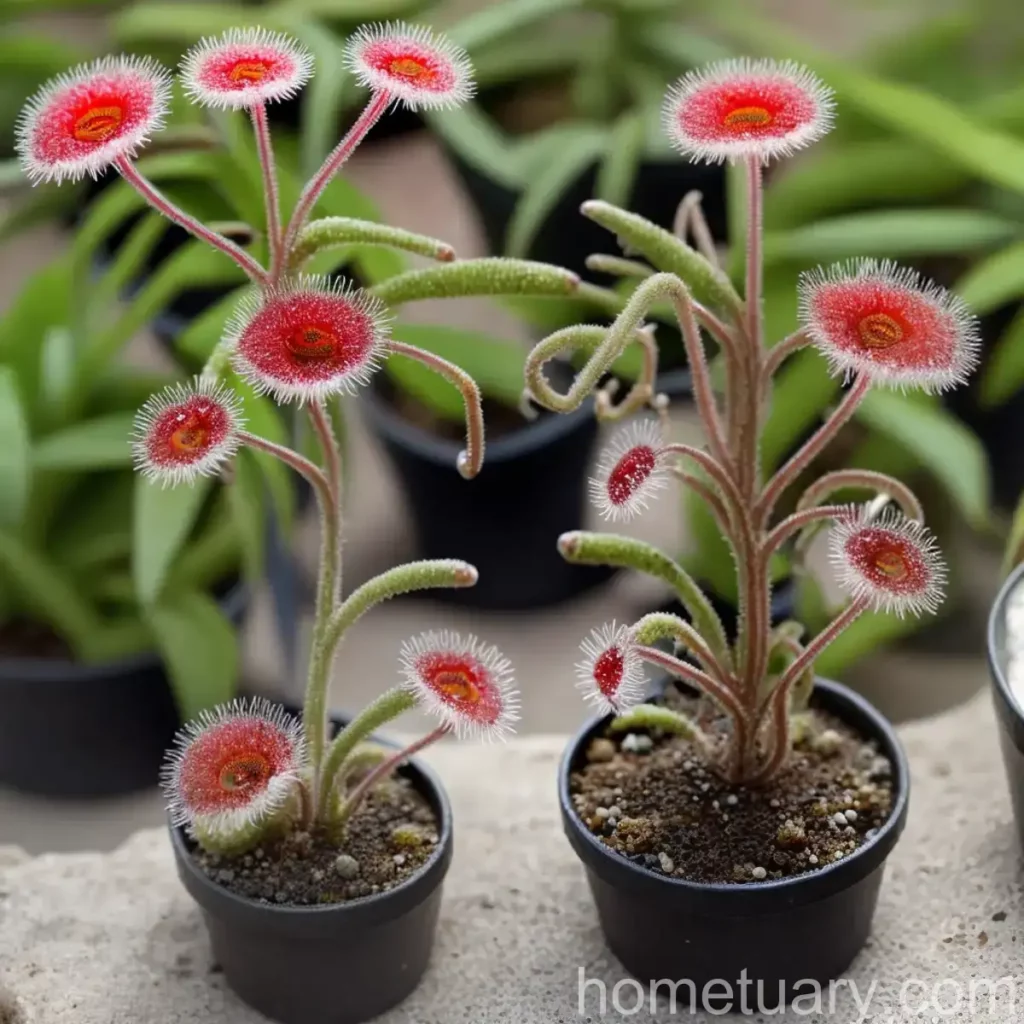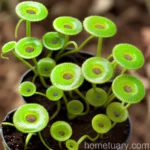Cape Sundew (Drosera Capensis): A Complete Guide to Cultivation and Care
Introduction
Cape sundew (Drosera capensis) is a captivating carnivorous plant native to the Cape region of South Africa. This intriguing plant is known for its beautiful, glistening droplets that adorn its tentacle-like leaves, making it a fascinating addition to any plant collection. In this comprehensive guide, we will delve into the various aspects of cape sundew, including its cultural significance, uses, care requirements, propagation methods, common diseases and pests, and interesting botanical facts. Whether you are a seasoned plant enthusiast or a novice gardener, this guide will equip you with the necessary knowledge to foster a thriving cape sundew specimen in your own home.
What is Cape Sundew (Drosera Capensis)?
Cape sundew, scientifically known as Drosera capensis, belongs to the Droseraceae family and is a perennial carnivorous plant. It is characterized by its striking, sticky leaves adorned with vibrant red tentacles, which secrete a viscous substance to attract, ensnare, and digest insects. This species is highly adaptable and has the remarkable ability to thrive in a variety of environments, including nutrient-poor soils where other plants struggle to survive. Cape sundew’s ability to capture and digest prey serves as a mechanism for obtaining essential nutrients, particularly nitrogen, that are deficient in its growing conditions.
Key Takeaways – Cape Sundew (Drosera Capensis)
Before we proceed further, let’s take a moment to review the key takeaways about cape sundew:
- Scientific Name: Drosera capensis
- Family: Droseraceae
- Native Habitat: Cape region of South Africa
- Characteristics: Sticky, tentacle-like leaves that trap and digest insects
- Cultural Significance: Admired for its unique appearance and carnivorous nature
Cultivation
Uses
Cape sundew has captivated plant enthusiasts and researchers alike due to its unique characteristics and potential therapeutic benefits. While its primary allure lies in its captivating appearance and insect-trapping prowess, cape sundew has also piqued interest for its potential medicinal properties. With its intriguing nature, it serves as an excellent educational tool for teaching about the intricacies of carnivorous plants and the diverse mechanisms of nutrient acquisition in the plant kingdom.
Care Requirements
Cape sundew’s cultivation and care are relatively straightforward, making it an ideal choice for both novice and experienced gardeners. By providing the appropriate conditions, you can create an environment where this remarkable plant can thrive.
Water
Proper watering is crucial for the health and vitality of cape sundew. Given its preference for acidic and nutrient-poor soils, the plant requires consistent moisture. It is essential to keep the soil moist at all times, but avoid waterlogging, as this may lead to root rot. Utilize distilled water or rainwater to avoid the accumulation of minerals and salts present in tap water, which can be detrimental to the plant’s health.
Sunlight
Cape sundew thrives in bright, indirect light. Position the plant in a location where it can receive ample sunlight, such as a south-facing window. Avoid exposing the plant to direct sunlight for extended periods, as this may result in leaf burn or dehydration.
Fertilizer
As a carnivorous plant, cape sundew derives essential nutrients from the insects it captures and digests. Therefore, it does not require additional fertilization. In fact, using standard fertilizers can be detrimental to the plant’s health and may lead to its demise. The nutrients obtained from prey serve as the primary source of nourishment for cape sundew, and supplemental fertilizers are unnecessary and potentially harmful.
Soil
The ideal growing medium for cape sundew is a mixture that mimics its natural habitat, such as a combination of sphagnum moss and perlite. This provides the necessary acidic and well-draining conditions that the plant requires. Avoid using standard potting soil, as it is likely to contain nutrients and minerals that are unsuitable for cape sundew’s specialized needs.
Pruning
Pruning requirements for cape sundew are minimal. Remove any dead or decaying leaves as needed to maintain the plant’s overall health and appearance.
Propagation
Cape sundew can be propagated through various methods, including leaf cuttings and seed germination. Both techniques have their advantages and can be employed based on the grower’s preference and expertise. Leaf cuttings, however, are the most commonly utilized method for successfully propagating cape sundew.
Leaf Cuttings
- Select a healthy leaf from the parent plant, ensuring that it is free from damage or disease.
- Carefully remove the leaf, ensuring that a small portion of the petiole (leaf stalk) is included.
- Place the leaf cutting in a suitable growing medium, such as a mixture of sphagnum moss and perlite, ensuring that the cut end is in contact with the medium.
- Keep the growing medium consistently moist and provide bright, indirect light for the cutting.
- After some time, new plantlets will emerge from the cut leaf, signaling successful propagation.
Container Popularity
Cape sundew is a popular choice for cultivation in containers due to its manageable size and captivating appearance. It is often grown in terrariums and other enclosed environments to create a microcosm that showcases its natural elegance and predatory nature. The portability and adaptability of container cultivation also make it an attractive option for plant enthusiasts with limited space or those looking to create specialized microclimates.
Container
When selecting a container for cape sundew, consider using a clear or translucent vessel for enhanced visibility and aesthetics. Additionally, ensure that the container provides ample drainage to prevent waterlogging and maintain a suitable growing environment for the plant.
Common Diseases
While cape sundew is relatively resistant to many common plant diseases, it is still susceptible to certain issues that can impact its health and vigor. Understanding these potential ailments and their management is essential for maintaining the well-being of the plant.
Disease Diagnosis
Common diseases that may affect cape sundew include fungal infections, such as powdery mildew, and bacterial diseases. Monitor the plant regularly for any signs of discoloration, wilting, or abnormal growth, as these may indicate the presence of disease. In the event of disease onset, promptly isolate the affected plant to prevent the spread of infection and implement appropriate treatment measures.
Common Pests
As a carnivorous plant, cape sundew has evolved various adaptations to capture and consume insects, thereby reducing its susceptibility to many common pests. However, it is still important to be aware of potential pest threats and take preventive measures to safeguard the plant’s health.
Pest Control
While cape sundew is adept at trapping insects, it can still fall victim to certain pests, including aphids and spider mites. Regular inspection of the plant and its surroundings can aid in early pest detection, enabling timely intervention through natural or low-toxicity pest control methods.
Botanist’s Tips
Here are some expert tips to help you cultivate and care for cape sundew successfully:
– Maintain consistent moisture levels to provide the plant with the necessary hydration and humidity levels.
– Avoid using tap water for watering, as it may contain minerals and chemicals that can harm the plant; opt for rainwater or distilled water instead.
– Create a suitable environment by providing the optimal lighting conditions and a well-draining, acidic growing medium.
– Monitor the plant regularly for signs of disease or pest infestations and take prompt action to address any issues.
Fun Facts
- Trap Mechanism: Cape sundew employs a fascinating trapping mechanism, where the sticky droplets on its tentacles ensnare unsuspecting insects, ultimately leading to their demise and digestion.
- Species Diversity: The genus Drosera encompasses a wide array of species, each with its own unique adaptations and characteristics for capturing prey.
- International Appeal: Cape sundew has garnered global fascination, captivating plant enthusiasts and researchers in various regions around the world with its captivating nature and intriguing biology.
Links to External Resources
To further expand your knowledge and understanding of cape sundew, consider exploring the following external resources:
- International Carnivorous Plant Society
- The Carnivorous Plant FAQ
- Carnivorous Plant Nursery
- Royal Botanic Gardens, Kew – Drosera
In conclusion, cape sundew (Drosera capensis) is a captivating and unique addition to any plant collection, offering a combination of aesthetic appeal and remarkable biological adaptations. By understanding and implementing the care techniques outlined in this guide, you can cultivate a thriving and healthy cape sundew specimen while gaining insights into the fascinating world of carnivorous plants.
Whether you are a seasoned enthusiast or a newcomer to the realm of carnivorous flora, exploring the intricacies of cape sundew is sure to enrich your botanical journey and deepen your appreciation for the diverse and marvelous world of plants.















